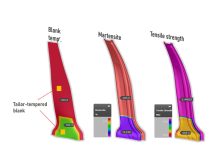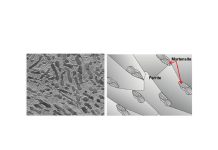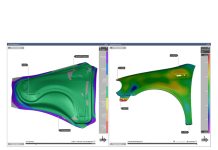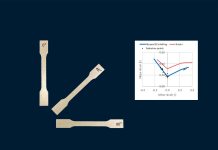In this blog post Kidambi Kannan, Technical Manager from AutoForm Engineering USA, discusses methods to test for and characterize kinematic hardening while asking if all of this is sufficient to ensure reliable and accurate springback prediction. You can see our previous post in this series here.
It turns out that tensile testing by itself does not capture some crucial aspects of material behavior that have a strong impact on springback outcomes in the physical world, and therefore also in simulation. During stamping, sheet metal often undergoes direct compression, and / or reversals between tension and compression loading. Material behavior in compression is different from that in tension, material is softer in plastic compression following plastic tension, material hardening and softening behavior evolves and changes over multiple reversals, and the damaged material’s “elastic” modulus does not stay constant at the value of Young’s Modulus during unloading and reloading.
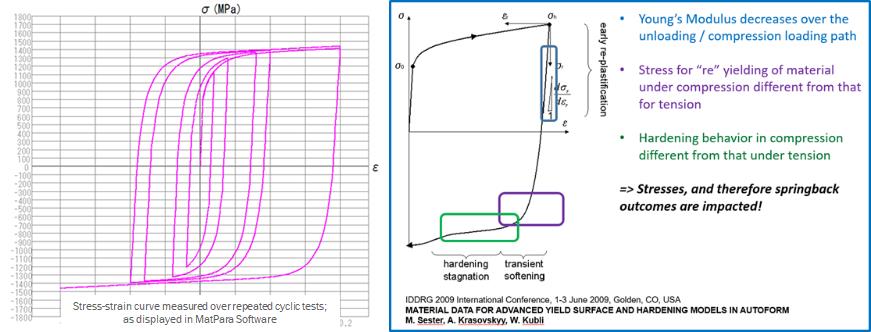
Stress-strain outcomes from cyclic tension-compression test, and an interpretation of observed mechanical phenomena
These empirical / physical observations are collectively labeled kinematic hardening, and need to be included in a material’s representation for competent simulation outcomes. Such load reversals are common in simple as well as complex stampings, as material flows through beads and / or form radiuses, and also when the tool simply opens after wipe or flange operations, allowing the panel to “relax”.
Below is a schematic diagram of how stresses accumulate at the bend radius, and how they eventually “reverse” upon unloading.
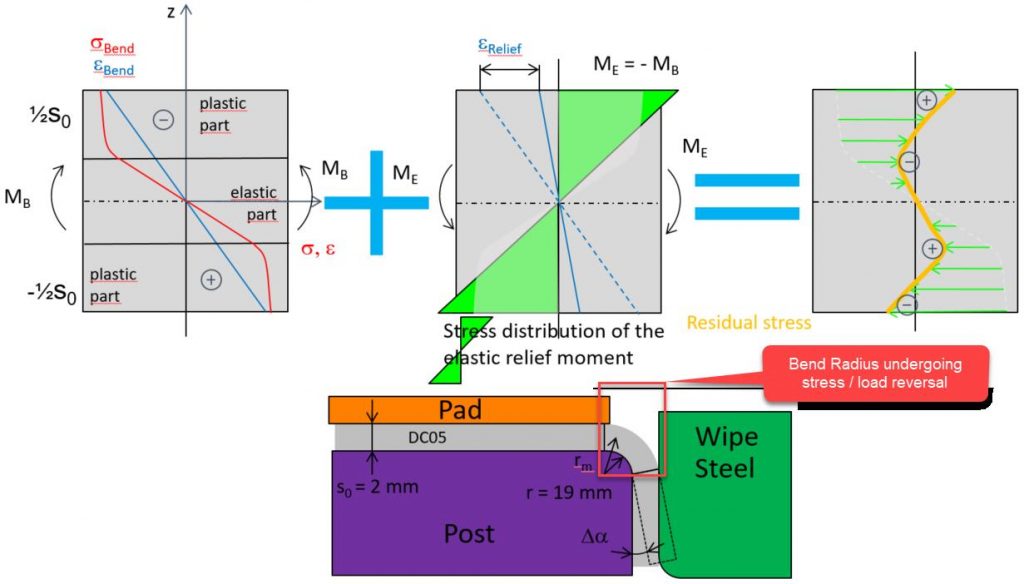
Schematic illustration of the buildup and reversal of plastic stress state during bending, and after relaxation
In the image below, the kinematic hardening influence of bending and unbending of the material flowing through a die radius is illustrated, as a consequence upon simulated springback outcomes.

Difference in springback simulation outcomes with and without Kinematic Hardening effects
The influence of kinematic hardening upon springback outcomes increases for higher strength materials.
So, how do we test for and characterize kinematic hardening? Tests required involve tension and compression, and are difficult to carry out; for this reason related data are not easily available. This situation is changing, albeit very slowly, with some material suppliers taking the lead. On the other hand, and without waiting for more of the necessary data to become available, some commercial simulation software includes typical parameter sets for different classes of materials. In the absence of anything else, it is useful, even important, to take advantage of these in routine simulations. Accounting for kinematic hardening behavior using just these typical parameters in simulation has clearly been proven to predict complex springback response more accurately (link / reference to Yurdaer’s blog on the Atlas Tool Success Story, and perhaps other similar ones already posted on blog.)
To wrap up, diligence in material representation that is faithful to real material behavior is crucial to all aspects of simulation outcome. It is even more so to springback and related effects (such as surface quality) which are the cumulative result of the progression of strains, and stresses, over the entire forming process. Advancing technology all around – testing, characterization, modeling, simulation – facilitate improved and reliable simulation outcomes by bridging the gap between what is necessary and what is possible.
I would like to acknowledge various AutoForm authors for some of the images used in the above.
New readers, don’t forget to sign up to our blog! Zero marketing emails. Just pure sheet metal forming top posts updates!



